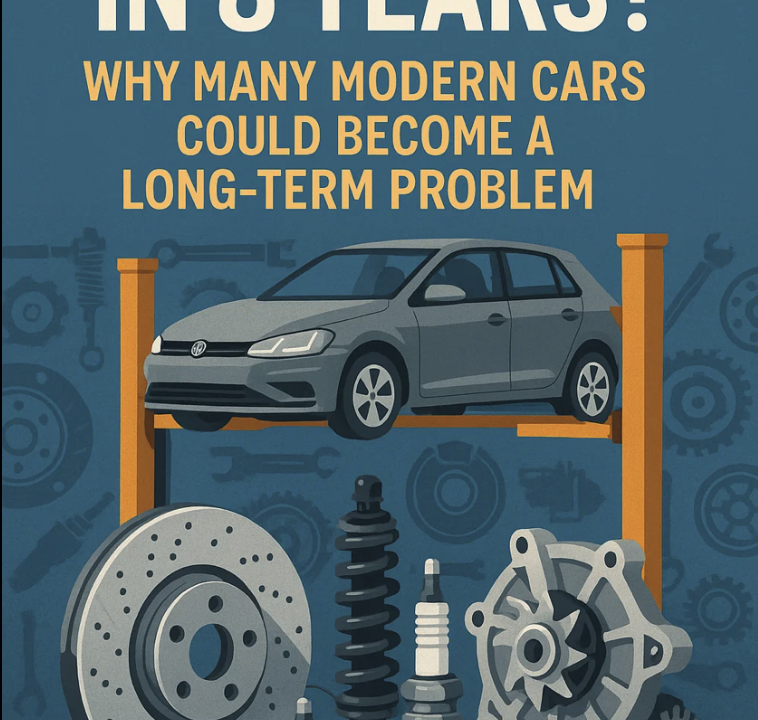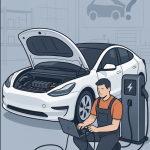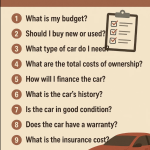
In online forums, one question is becoming increasingly common: What happens if I need a spare part for my car in 8 years – especially if it’s from a newer or lesser-known brand?
The automotive industry is evolving rapidly. With electric vehicles, software-driven updates, and a wave of new manufacturers entering the market – particularly from China – innovation is everywhere. But one critical area is often overlooked: long-term spare parts availability.
While traditional carmakers have spent decades building service networks and parts supply chains, many of today’s new entrants are launching vehicles without clear plans for long-term support.
1. A Shift Toward Short-Term Product Cycles
The pace of model updates and revisions has increased dramatically:
- 🚗 New models every 2–3 years is now common among young brands like MG, NIO, BYD, etc.
- 🔁 Frequent facelifts and technical changes mean that even models with the same name may be mechanically and electronically different.
- 🧩 This leads to fewer standardized parts, more unique components, and fragmented inventories.
Example:
While a VW Golf Mk5 (2003–2009) remained relatively consistent across production years, newer models like the MG4 have already undergone multiple revisions since their launch in 2022 – affecting battery systems, software platforms, and even body styling.
2. Why Established Brands Have the Advantage
Traditional manufacturers like BMW, Toyota, and Volkswagen offer significant long-term reliability due to:
✅ Well-established global logistics networks
✅ Centralized digital parts catalogues
✅ Obligations to supply parts for at least 10 years
✅ A strong aftermarket presence with third-party suppliers
A 2006 MINI? No problem – most parts are still readily available via official channels or certified third-party suppliers.
3. The Risk with New and Chinese Brands
Many newer brands entering the EU market promise value and modern features – but often lack infrastructure for long-term support:
🚫 No central European parts warehouse
🚫 Unclear warranty and parts policy
🚫 Few or no certified service partners in rural areas
🚫 No third-party aftermarket to fall back on
Stats (ACEA, 2024):
- Only 38% of Chinese automotive brands in the EU operate a certified service or parts center within the EU.
- The average wait time for out-of-stock parts is between 4 to 12 weeks.
- 1 in 5 independent repair shops in Europe now refuses repairs on unfamiliar or unsupported brands due to risk of delays or part unavailability.
4. Real-Life Example: The Aiways Case
A reader recently shared their experience with us:
“My Aiways U5 had a broken front camera. It took over 9 weeks to arrive from China because it got stuck in customs. The car wouldn’t even start without it. I realized how fragile the ownership experience can be when you’re 100% dependent on a weak supply chain.”
This isn’t just about convenience – when it comes to electronic modules, sensors, or unique bodywork, a single missing part can total a vehicle that’s otherwise in perfect mechanical condition.
5. What Buyers Should Ask Before Choosing a Brand
If you’re planning to keep your car longer than 3–5 years, consider asking these key questions before buying:
✅ Checklist:
- Does the manufacturer have an official parts warehouse in the EU?
- How many certified service centers are within driving distance?
- Has the model been on the market for several years?
- Are there third-party suppliers offering compatible parts?
- Is the vehicle built on a modular or scalable platform (improves long-term support)?
When in doubt, opting for a proven manufacturer may save you headaches (and money) down the road.
6. Final Thoughts: Cheap Now, Costly Later?
The sleek designs and affordable prices of many new vehicles can be tempting. But long-term ownership comes with a very real risk: if a single proprietary part becomes unavailable, your vehicle may become impossible – or uneconomical – to repair.
💡 In the end, a cheap car today could turn into an expensive burden tomorrow.
Related Articles:
- 10 Questions to Ask Before Buying a Car
- EV Repairs: What Happens When Your Electric Car Breaks?
- Chinese Car Brands in the EU – A Growing but Risky Market
📬 Have you had issues getting parts for your vehicle?
Let us know or share your experience in the comments – we’d love to hear from you and may even feature your case in a future article.












